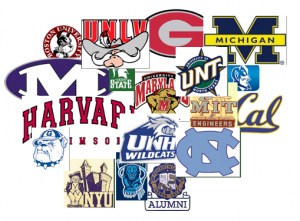 College environments are richer in technology today than ever before. Where students used to use card catalogs and microfilm for research, they now use online databases. Where professors used to write lecture notes on blackboards, they now use electronic slide shows. Technology is growing and evolving by the day, and students need to keep up with this progress in order to make the most of their college years.
College environments are richer in technology today than ever before. Where students used to use card catalogs and microfilm for research, they now use online databases. Where professors used to write lecture notes on blackboards, they now use electronic slide shows. Technology is growing and evolving by the day, and students need to keep up with this progress in order to make the most of their college years.
Remember these 5 tech tips for college bound students and get off to a great start.
- Always Try Before You Buy
Technological investments can be very expensive, and you don’t want to drop large amounts of your own money on something that isn’t going to work for you. Whether you’re shopping for a new computer, a software package, or any other tech item, be sure to try before you buy. You might not realize by simply reading product descriptions that a given product isn’t going to suit your needs. Take advantage of free trials, and talk to friends about taking their tech items for a spin before you commit to a purchase. - Talk to Professors About Software
There are a number of software packages that may benefit you in school, and some of them are available at a significant discount to students. Try to talk to college professors about what kinds of software may benefit you. Tech needs vary from student to student, and the software suite that works for your friend in finance may not be useful for your curriculum. You want to use technology to your advantage, and your professors can show you the best way to do so. - Take Advantage of Networking Opportunities Online
One of the greatest advantages of modern technology for students is the capacity for networking. Through email, social media, and a number of other avenues, you can easily stay in touch with everyone you meet in college. These people can become your best friends now, and they can become valuable professional contacts in the future. Never underestimate the importance of networking, and use technology to your advantage while you study to build connections with the people you meet. - Look for Ways to Save
Technology can be expensive, but clever students can save money by shopping smart and making the most of their tech potential. Tune into special sales and promotions like Cyber Monday, when tech items are sold at significant discount. Use your technology to its fullest potential while you study. Rather than buy heavy and expensive texts, see if your required literature is available for download in e-book format. Avoid spending on planners and other organizational tools by using your computer, smart phone, or tablet to fill this purpose. There are dozens of ways to make your technology work for you and save money at the same time. - Learn as Much as You Can
Learn as much as you can about technology while you’re in school. Getting into web design and SEO, learning how to implement keywords, and knowing how to reverse a Google penalty are all valuable skills in a world in which industry is governed by technology. Prepare yourself for a career in the digital world by becoming an expert on modern technology while you study in college.
Staying abreast of technology and using it to your advantage is imperative in today’s digital age.





